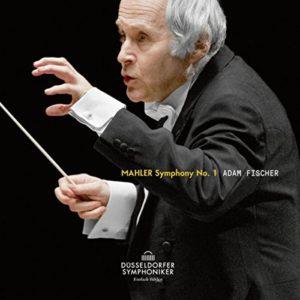GRAMOPHONE Review: Sibelius Symphonies 1 & 6 – BBC National Orchestra of Wales/Søndergård
 The solo clarinet which stands on the threshold of Sibelius’ symphonic journey is quite simply the palest, chilliest, loneliest sound in the world. Thomas Søndergård has a nose for such things and his Sibelius – as we have already heard in the first release of the series coupling the Second and Seventh symphonies – is nothing if not atmospheric.
The solo clarinet which stands on the threshold of Sibelius’ symphonic journey is quite simply the palest, chilliest, loneliest sound in the world. Thomas Søndergård has a nose for such things and his Sibelius – as we have already heard in the first release of the series coupling the Second and Seventh symphonies – is nothing if not atmospheric.
There are distinct plusses and minuses. I like that Søndergård keeps all the surfaces unvarnished and the woodwind voices keen and folksy. The plain-speaking quality makes for a really elemental sound with climaxes in the First Symphony’s first movement craggy and rough-hewn. There is a transparency, too, with the prominence of inner parts illuminating the harmony in interesting ways – and again, in the second movement, a special remoteness as the dynamics become withdrawn in the closing pages. It’s a uniquely Sibelian sound alright and, as such, like no other – and we are a world apart from the super-plushness of some accounts one could mention, the wholly inappropriate Rattle/Berlin Philharmonic recording for one.
But against all this one must measure a certain sluggishness in rhythmic matters and passage after passage where Søndergård’s response and that of the excellent BBC National Orchestra of Wales might be cleaner, tighter, more emphatic. The scherzos of both symphonies are oddly deliberate with that of the First (Allegro?) like an ungainly folk dance (for polar bears?) where the timpani feel puddingy and lacking crispness. Likewise the Poco vivace of the Sixth – very poco – is almost perversely the wrong side of propulsive. But then again Søndergård does not refine the Sixth out of recognition – there is still, for all the concision and austere beauty, an avoidance of preciousness. And when storm clouds pass fleetingly over the landscape at the close of the first movement the effect is more than a little unsettling.
So, a very personal response to this music and one which accentuates its strangeness, its elusiveness. It won’t be to everyone’s taste, though, and much as I am pleased to take this voyage of discovery with Søndergård I’ve a feeling I won’t be alone in craving on occasions a keener profile, sharper relief, and greater rhythmic dynamism.
You May Also Like

GRAMOPHONE Review: Brahms Double Concerto / Viotti Violin Concerto No 22 / Dvořák Silent Woods – Christian & Tanja Tetzlaff, Deutsches SO Berlin/Järvi
15/12/2023
GRAMOPHONE Review: Mahler Symphony No. 1 – Düsseldorfer Symphoniker / Fischer
24/04/2018